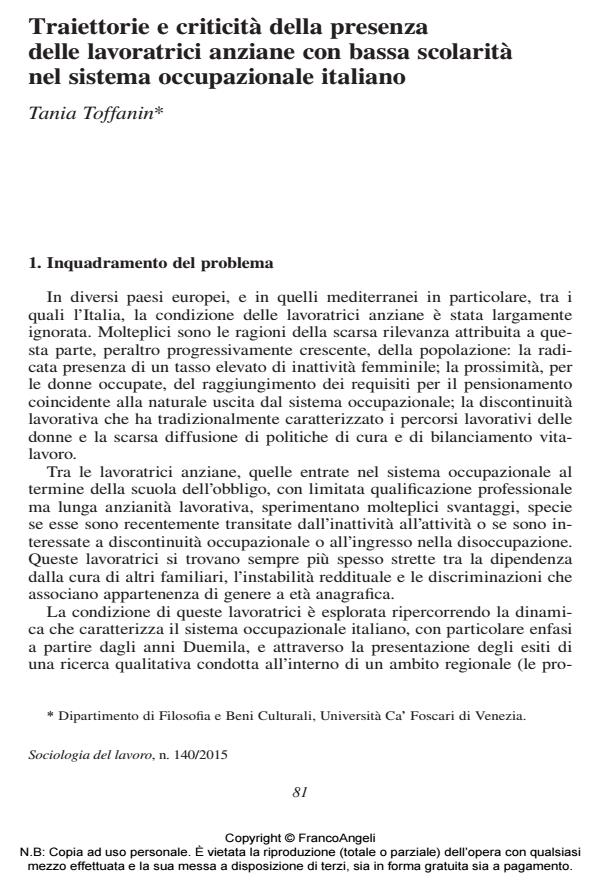Trajectories and critical aspects of the presence of older women workers with low education levels in the Italian employment system
Journal title SOCIOLOGIA DEL LAVORO
Author/s Tania Toffanin
Publishing Year 2015 Issue 2015/140
Language Italian Pages 17 P. 81-97 File size 118 KB
DOI 10.3280/SL2015-140006
DOI is like a bar code for intellectual property: to have more infomation
click here
Below, you can see the article first page
If you want to buy this article in PDF format, you can do it, following the instructions to buy download credits

FrancoAngeli is member of Publishers International Linking Association, Inc (PILA), a not-for-profit association which run the CrossRef service enabling links to and from online scholarly content.
In Italy, from the year 2000 onwards, older women workers have increased in the labour market. However, the economic transformations taking place on a global scale and the deregulation of the labour market occurred at national level have made intermittent and precarious the condition of these workers, especially considering those with low education. The article examines the condition older women workers in Italy from the year 2000 onwards and presents the results of a qualitative research carried out in 2013 in Veneto region. The analysis of the national framework and the examination of the research findings show the vulnerability that affects the older women workers with low education: the recent pension reforms and the casualization of the employment relation require such workers to postpone retirement but with no guarantee of income, both combined with the general reduction in social spending that expands their load of care work.
Keywords: Older women workers, reproductive labour, work-family role system, union representation
Tania Toffanin, Traiettorie e criticità della presenza delle lavoratrici anziane con bassa scolarità nel sistema occupazionale italiano in "SOCIOLOGIA DEL LAVORO " 140/2015, pp 81-97, DOI: 10.3280/SL2015-140006